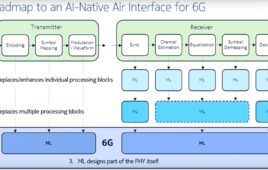The most advanced space weather radar in the world is to be built in the Arctic by an international partnership including the UK, thanks to new investment, in the region of £4 to £6m from NERC.
The EISCAT_3D radar will provide UK scientists with a cutting-edge tool to probe the upper atmosphere and near-Earth space, helping them understand the effects of space weather storms on technology, society and the environment.
The UK government has placed space weather on the National Risk Register, in recognition of the potential damage it can do to satellites, communications and power grids. Solar storms drive space weather, but one of the biggest challenges in space weather science is improving our understanding of how the Earth’s magnetic field and atmosphere responds to this. EISCAT_3D will give scientists the means to understand these connections.
Costing a total of £63m, the facility will be distributed across three sites in northern Scandinavia – in Skibotn, Norway, near Kiruna in Sweden, and near Kaaresuvanto in Finland. The project will start in September 2017 with site preparations beginning in summer 2018. The radar is expected to be operational in 2021.
A key capability of the radar will be to measure an entire 3D volume of the upper atmosphere in unprecedented detail. This is necessary to understand how energetic particles and electrical currents from space affect both the upper and the lower atmosphere. Scientists will be able to take measurements across scales from hundreds of metres to hundreds of kilometres, providing exceptional detail and vast quantities of data, and opening the scope of research that can be carried out.
The northern hemisphere already hosts several EISCAT radars, situated in the so-called auroral oval – where you can see the northern lights or aurora borealis. They take measurements in a region of the Earth’s upper atmosphere called the ionosphere – from about 70 to 1000 km altitude. They sample the electron concentration and temperature, and the ion temperature and velocity at a range of altitudes along the radar beam direction. But the current EISCAT radars provide a single pencil beam, so researchers can only look at one small portion of the sky at a given time.
Dr Andrew Kavanagh, UK EISCAT Science Support, based at the British Antarctic Survey, said:
“The new EISCAT_3D radar will measure the ionosphere in lots of different directions simultaneously. It will be like having hundreds of dishes all operating together, looking in different directions. This means we can easily see changes in the ionosphere and don’t miss important data: when our measurements change we will be able to say whether something had just appeared or faded or if something was moving through the beams. This is really important as it gives us information about how space weather effects evolve.”
The site in Skibotn, Norway will have a transmitter and receiver array, while the two other sites will have receiver arrays. These will generate beams that will ‘look into’ the transmitted beam and give researchers many intersection heights.
NERC’s chief executive, Professor Duncan Wingham, said:
“EISCAT_3D will give us a 3D picture of interactions between space weather and our upper atmosphere with a detail we’ve not seen before, giving us answers to questions researchers have about the impacts of space weather on the upper atmosphere. We need this information to reduce the risks posed by space weather on our communications systems, satellites and power grids, which we all rely on.”
EISCAT Director, Dr Craig Heinselman, said:
“We are very excited to be starting construction of the new EISCAT_3D radar system. Building on over three and a half decades of scientific observations with the legacy EISCAT radars, this new multi-site phased-array radar will allow our international user community to investigate important questions about the physics of the near-Earth space environment. The radar will make measurements at least ten times faster and with ten times finer resolution than current systems. It will also provide fundamentally different measurements which are unique in the scientific world by utilising, initially, fully flexible receive arrays at two separated locations in the Nordic region in concert with the core transmit/receive array. These systems will let us probe phenomena such as the aurora borealis in three dimensions and, in concert with a variety of other measurements, will allow us to uncover the fundamental effects of phenomena such as space weather. EISCAT_3D uses modern analog and digital technologies that enable flexibility now and a path forward for implementing new ideas that emerge from future discoveries. It truly represents a platform for the next generation of space scientists to build upon.”



